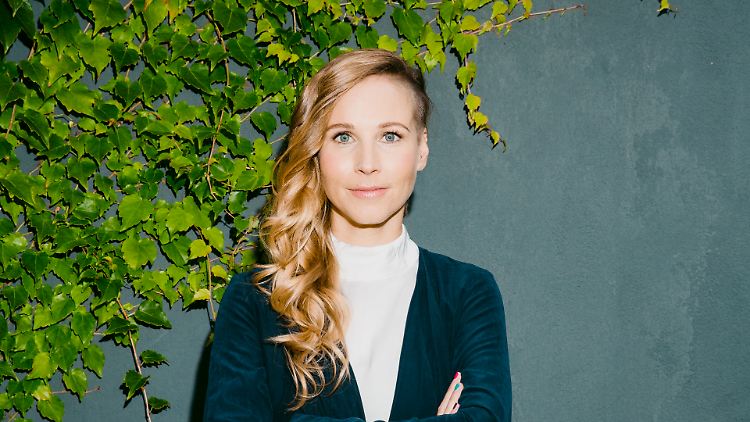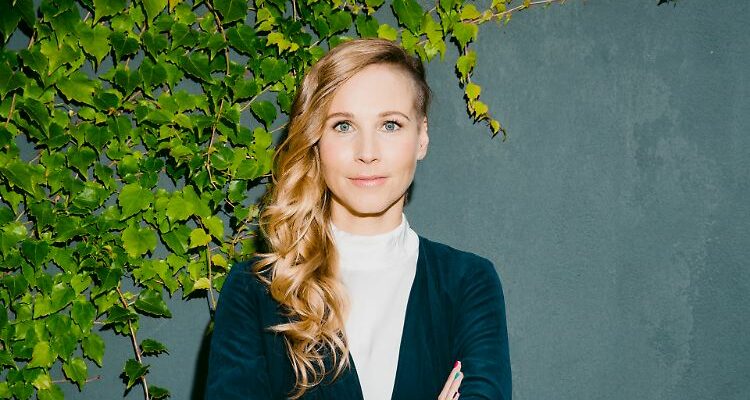Shared leadership instead of a one-man show? Digital board member Fränzi Kühne is convinced of the so-called tandem model. After a year and a half in dual leadership at the pen manufacturer Edding, she takes stock. The manager and founder explains in an interview what her everyday work is like, how the company and her colleagues benefit and why there is no power struggle for her with ntv.de.
You have decided on job sharing. On social media draw a positive conclusion after a year and a half. Still, your time seems to be short. It was very difficult for both of us to find an appointment to speak to each other. Hand on heart, does job sharing really work that well?
Honestly and bluntly? Job sharing works great! But that wasn’t the case from the start. Of course, I also use the time that I don’t work for Edding AG for my family life and the other jobs I do on the side. Things sometimes get turbulent, especially during the Christmas season.
You are a career woman. How did you come up with the idea of sharing your job – we’re talking about a management job – with someone?
When I left the company I founded, I was in a phase of discovery. I knew early on that no matter what new thing I started, there was no way it was going to be full-time. I have too many projects on the side for that. I have written a book and I give lectures on “Diversity” and “New Work”. I wanted to work with a team again, but still do my other jobs and take care of my family.
What requirements does a company have to meet in order for job sharing, especially shared leadership, to work in the company?
Basically, you need a certain openness to get involved in something like this. Ultimately, it doesn’t really depend on the company. In our case, the “governance” structure had to be clarified and the statutes had to be changed in order to create the legal framework for both of us to sit on the board. We have exactly the same contracts. One person should not earn more and the other less. After the general conditions had been clarified, it was then up to us – the two tandem people – to arrange things. Basically, I think you shouldn’t expect any prefabricated structures, but rather act yourself and think about a suitable structure for this job model.
They have been sharing the job of digital director at Edding AG since 2022 Boontham Temaismithi. Boontham is your “tandem,” you say. What is the difference between job sharing and a tandem job?
This is defined differently everywhere. For me, tandem tends to mean more of a division of time, whereas job sharing means sharing responsibility for content. Boontham and I do both. We share projects, but also leadership.
And how can you imagine this in practical terms?
Contractually, we share a position, but we both work 60 percent. Job sharing sounds like 50/50, but you can’t get by with less. Our working hours overlap a lot. We are sparring partners, so we have a close exchange of content. If I go into a board meeting with a decision, it is automatically wiser than if only one person had made it. The quality is simply better because it has gone through two minds.
Does that mean you keep short-circuiting all the time? That sounds complicated. Doesn’t that delay decisions?
That’s right, we are in constant communication. But if we have to make a decision immediately and have not yet exchanged ideas, we have agreed that whoever is at this appointment will decide. And the decision is then binding. Whoever says something first has set the opinion. You have to come to terms with that.
You certainly often have to coordinate things outside of your working hours. What rules have you set for this?
We work a lot on calendars. I have days where it is very clear to the organization and my tandem partner that I don’t work for Edding and do other things. Jour-fixe appointments are then divided. We are usually both there at important strategic meetings. But it’s also the case that I don’t keep clear time records. So I don’t work by a time clock. This also means I have no idea how many hours a week I will be paid for a 60% position. I do this more or less based on gut feeling.
But then you might be working too much and for free?

Fränzi Kühne is co-founder of TLGG, the first social media agency in Germany. In 2017, at the age of 34, she was Germany’s youngest supervisory board member. She has been on the board of Edding AG since the beginning of 2022. There she shares the position of Chief Digital Officer with her tandem partner Boontham Temaismithi, also co-founder of TLGG. As dual leaders, they drive the digital transformation in the family business.
(Photo: Fränzi Kühne)
No, on the other hand, I benefit from times when I go on longer vacation or when I’m not there for Edding three days a week. Then I call Boontham because I’m interested in what’s going on. But I wouldn’t consider that as working time. A certain entrepreneurial mindset and responsibility on the part of the actors must already be present.
At first glance, that sounds very financially advantageous for a company. Surveys have shown that job sharing or such tandem models are perceived as more productive, agile and resilient than if one person works full time alone. Would you sign it like that?
The presence and impact of two people taking responsibility is pretty obvious for a team. If there are two parallel events that are important to us, we can attend both. What matters to Edding is that someone is always available and reachable. This is a huge plus point. I think that’s why such a model is perceived as more stable. But as I said, this always requires a certain openness.
Don’t you see any disadvantages?
Of course there are also skepticism and questions. Who approves the vacation and stuff. It is important to always have good answers ready and to always get feedback. For example, is there room for improvement somewhere? So you always have to keep your ear to the ground. Ultimately, it just has to feel good for everyone.
Does it happen that employees prefer to work with one of you or the other?
That’s human. In some constellations it is the case that the professional exchange takes place through me and the personal exchange takes place through Boontham. But sometimes it is exactly the other way around. With some people we are also good cop and bad cop. We play it just like the others. This is an enormous advantage and it is perceived as such. More important than anything else is that we provide security. None of us has a knowledge advantage or deficit. The team has to be able to rely on that. There is no need to tell anything twice or reschedule an appointment because one of us is not in the picture. No additional work may arise through job sharing or the tandem model.
A sharing model is more complex, and not just for employees. For the employer it means additional costs and additional administrative work. Aren’t these valid reasons against the job sharing model?
When we look at job advertisements and the requirements today, it is often the case that four people are actually being sought for one position. That’s why two thinking heads with different skills and competencies in personal union are perfect. This makes sense based on common sense alone. A company buys two heads who bring and use different knowledge and different strengths. The truth is: There is a lot of magic in this completely underestimated model. We need different skills in these times. In addition, a generation is growing up that is no longer prepared to work 40, 60 or 80 hours a week. With the job sharing model, the employer gets exactly what he needs. Plus at a good price.
Given the chronic shortage of skilled workers, do you also see the model as an opportunity to attract more women to the job market?
Sure, of course. We are currently doing without 50 percent of the population because leadership and shared leadership don’t get into people’s heads. Many people – whether in the executive suite or in subordinate departments – simply cannot imagine this. Status thinking also plays a role. Very few people want to share their position of leadership and power because that would mean sharing the success when things go well. For my part, I always say that the successes we celebrate are double joy and the suffering and failures are shared suffering. For me it is no longer possible to imagine life without it.
Can everyone tend to do that?
You have to be sure that your partner at work doesn’t pursue their own political agenda and suddenly say, I actually want the position all to myself. Actually, I pursue other personal goals. This security is absolutely necessary so that there is no power struggle. Otherwise this model is doomed to failure. Finding exactly that person with whom you can do this, who you trust 100 percent, is actually the biggest challenge.
Do you have the impression that your model is setting a precedent?
Rather less. At the board level, we are currently the only model in Germany. Unfortunately, it has not yet been imitated.
They named the different skills that are advantageous for companies. Can you imagine even more employees being able to share a job in a meaningful way? What about three or four people?
I’m wondering why it shouldn’t work. This of course makes the coordination effort and the search for a partner even more complex. But in principle it’s possible. I also founded a company with three people and it felt like a three-way job sharing, because you have the same responsibility with different divisions depending on your strengths and skills. So why not?
Diana Dittmer spoke to Fränzi Kühne
